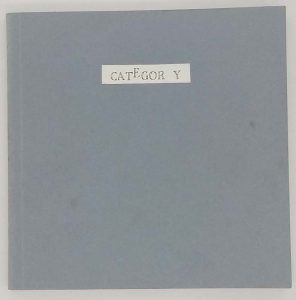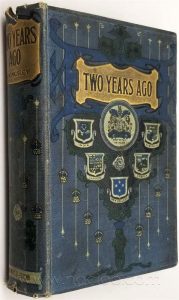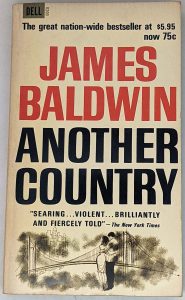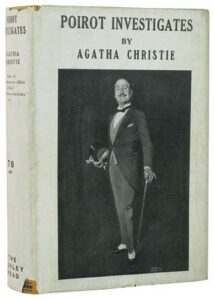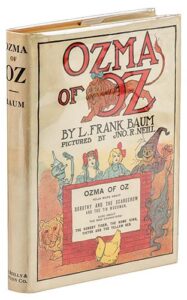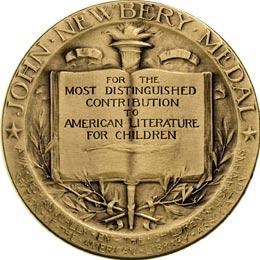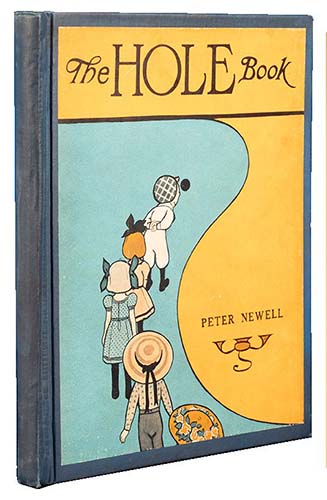
The Hole Book (1908), written and illustrated by Peter Newell, stands as a groundbreaking work of early 20th-century children’s literature that revolutionized the concept of interactive storytelling. Published by Harper & Brothers, this ingenious volume follows the comedic trajectory of a bullet that accidentally fires through the entire town—with each page physically pierced by an actual hole that traces the projectile’s path. Newell’s sequential illustrations transform this simple gimmick into a masterclass of visual narrative, as readers watch the bullet pass through a baker’s doughnut, a policeman’s hat, and finally a balloon that dramatically pops. The artist’s crisp pen-and-ink drawings, with their exaggerated expressions and dynamic compositions, recall the golden age of newspaper cartoons while anticipating modern comic book storytelling. Each page turn becomes a surprise as Newell’s illustrations cleverly incorporate the die-cut hole—sometimes as the bullet’s entry point, other times as part of the scenery itself. The book’s rhythmic verse narration (“Through the window-pane it went—/ Through the pantry wall it tore,/ Through the grocer’s brand-new tent…”) builds anticipation for each new hole’s appearance, making this one of the earliest examples of what would later be called “participatory literature” for children. Newell’s innovative physical manipulation of the book-as-object predates modern pop-up books by decades, while his deadpan humor about the escalating chaos remains fresh over a century later.
About Peter Newell (1862-1924):
This American illustrator and author pioneered interactive children’s books with his inventive “novelty” formats that physically engaged readers. Beginning his career as a magazine cartoonist for Harper’s Weekly and The Saturday Evening Post, Newell developed a signature style blending clean linework with slapstick humor. His breakthrough came with Topsys & Turvys (1893), a book that could be read upside-down, followed by The Slant Book (1910), which used a rhomboid shape to tell its story. The Hole Book represents his most famous innovation—the die-cut narrative—which influenced later artists like Bruno Munari and Jan Pieńkowski. Unlike contemporaries who created lavish gift books, Newell focused on conceptual simplicity and physical playfulness, believing children should interact with stories literally and figuratively. Beyond books, he designed the iconic “Nervy Nat” comic strip and illustrated Mark Twain’s Tom Sawyer Abroad. This 1908 masterpiece captures Newell at his creative peak, where his cartoonist’s timing, poet’s rhythm, and inventor’s ingenuity converged to create something entirely new in children’s publishing.
For readers who delight in this edition, these kindred works may entertain:
• The Slant Book (1910) also by Newell – featuring his innovative rhomboid-shaped pages
• Pat the Bunny (1940) by Dorothy Kunhardt – continuing the tactile book tradition
• The Hole (2023) by Øyvind Torseter – a modern Scandinavian homage to Newell’s concept
Bibliographic Note: First editions feature the die-cut hole precisely aligned through all 30 pages, with Newell’s original blue pictorial cloth binding showing the bullet’s path. Original artwork from this book survives in the University of Minnesota’s Kerlan Collection, including sketches where the bullet passes through different objects.
